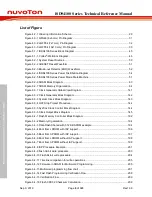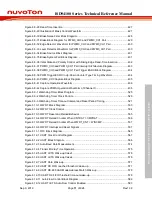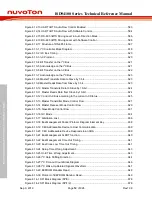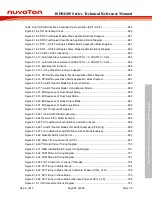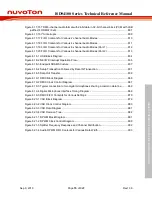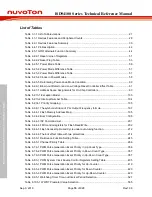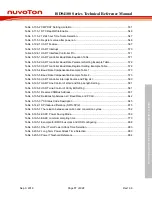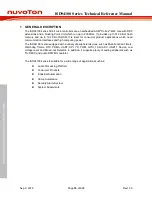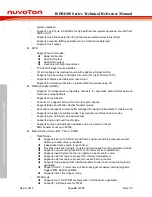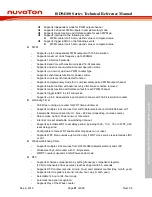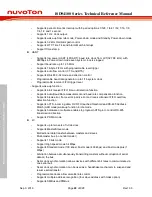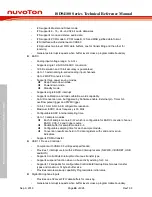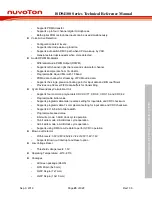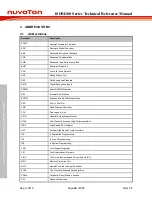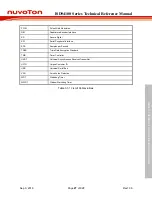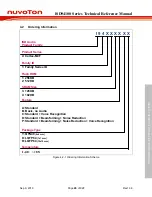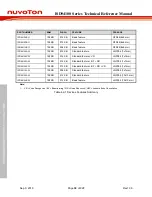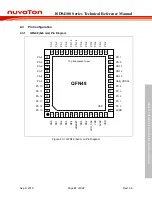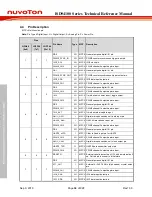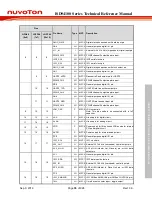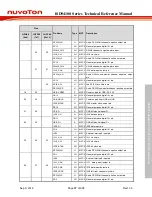
ISD94100 Series Technical Reference Manual
Sep 9, 2019
Page
22
of 928
Rev1.09
IS
D
9
410
0
S
ER
IE
S
T
E
C
HN
ICA
L
RE
F
E
RE
NCE
M
AN
U
AL
–
Supports periodic time tick interrupt with 8 period options 1/128, 1/64, 1/32, 1/16, 1/8,
1/4, 1/2 and 1 second
–
Supports 1 Hz, clock output
–
Supports wake-up from idle mode, Power-down mode and Standby Power-down mode
–
Supports 32 kHz Oscillator gain control
–
Supports RTC Time Tick and Alarm Match interrupt
–
Support Time stamp
UART
–
Supports low power UART (LPUART): baud rate clock from LXT(32.768 kHz) with
9600bps in Power-down mode even system clock is stopped
–
Support baud rate up to 12.5 MHz
–
Supports 16-byte FIFOs with programmable level trigger
–
Supports auto flow control ( CTS and RTS)
–
Supports RS-485 9-bit mode and direction control
–
Programmable baud-rate generator up to 1/16 system clock
–
Programmable receiver FIFO trigger level
–
Supports wake-up function
–
Supports 8-bit receiver FIFO time-out detection function
–
Supports Auto-Baud Rate measurement and baud rate compensation function
–
Supports break error, frame error, parity error and receive/transmit FIFO overflow
detection function
–
Supports nCTS, incoming data, RX FIFO reached threshold and RS-485 Address
Match (AAD mode) wake-up function in idle mode.
–
Supports hardware or software enables to program nRTS pin to control RS-485
transmission direction
–
Supports PDMA mode
I
2
C
–
Supports up to two sets of I
2
C devices
–
Supports Master/Slave mode
–
Bidirectional data transfer between masters and slaves
–
Multi-master bus (no central master)
–
Supports 10 bits mode
–
Support High speed mode 3.4Mbps
–
Supports Standard mode (100 kbps), Fast mode (400 kbps) and Fast mode plus (1
Mbps)
–
Arbitration between simultaneously transmitting masters without corruption of serial
data on the bus
–
Serial clock synchronization allows devices with different bit rates to communicate via
one serial bus
–
Serial clock synchronization can be used as a handshake mechanism to suspend and
resume serial transfer
–
Programmable clocks allow versatile rate control
–
Supports multiple address recognition (four slave address with mask option)
–
Supports SMBus and PMBus

